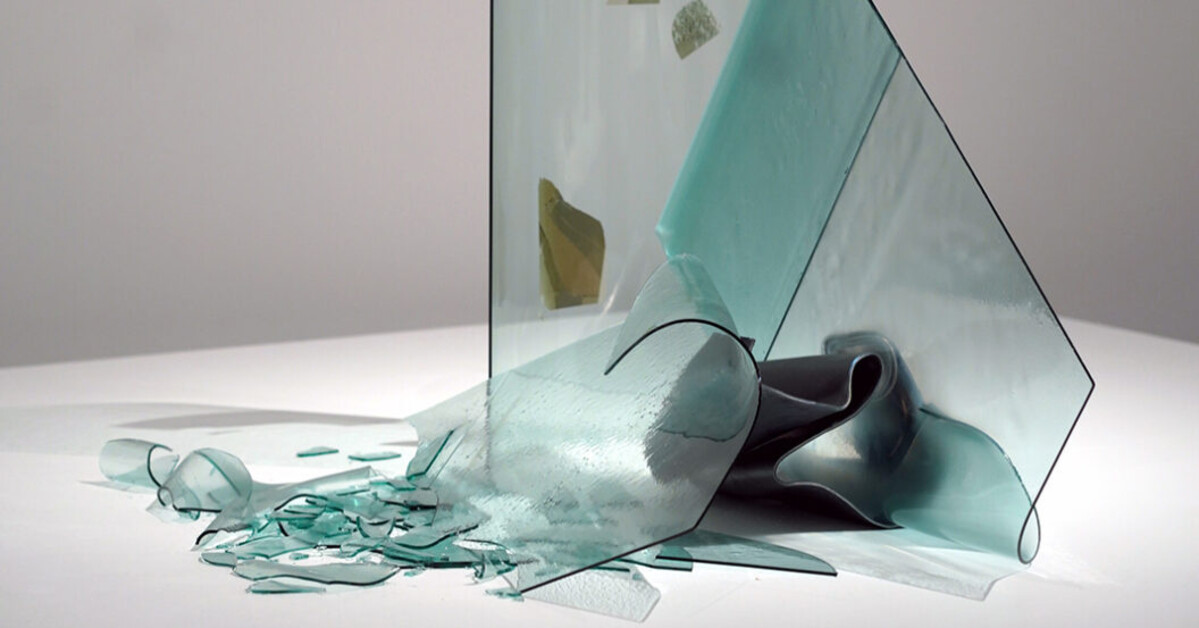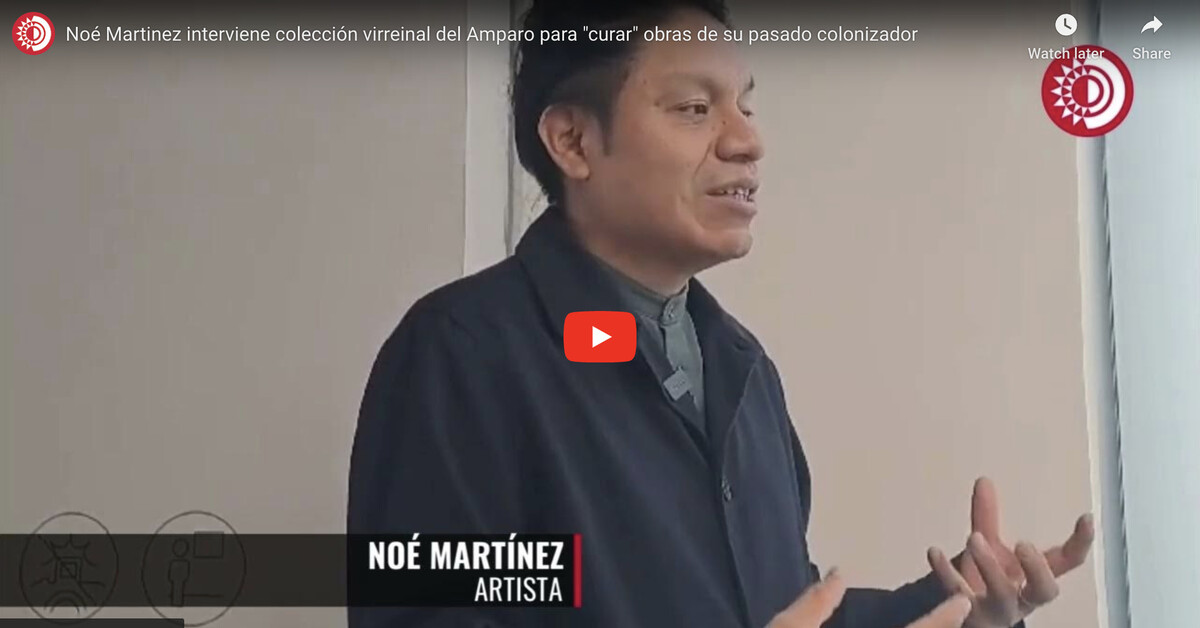A Major Survey of Black Collage Art Proves That Print Isn’t Dead
ARTnews / Aug 16, 2024 / by Alex Greenberger / Go to Original
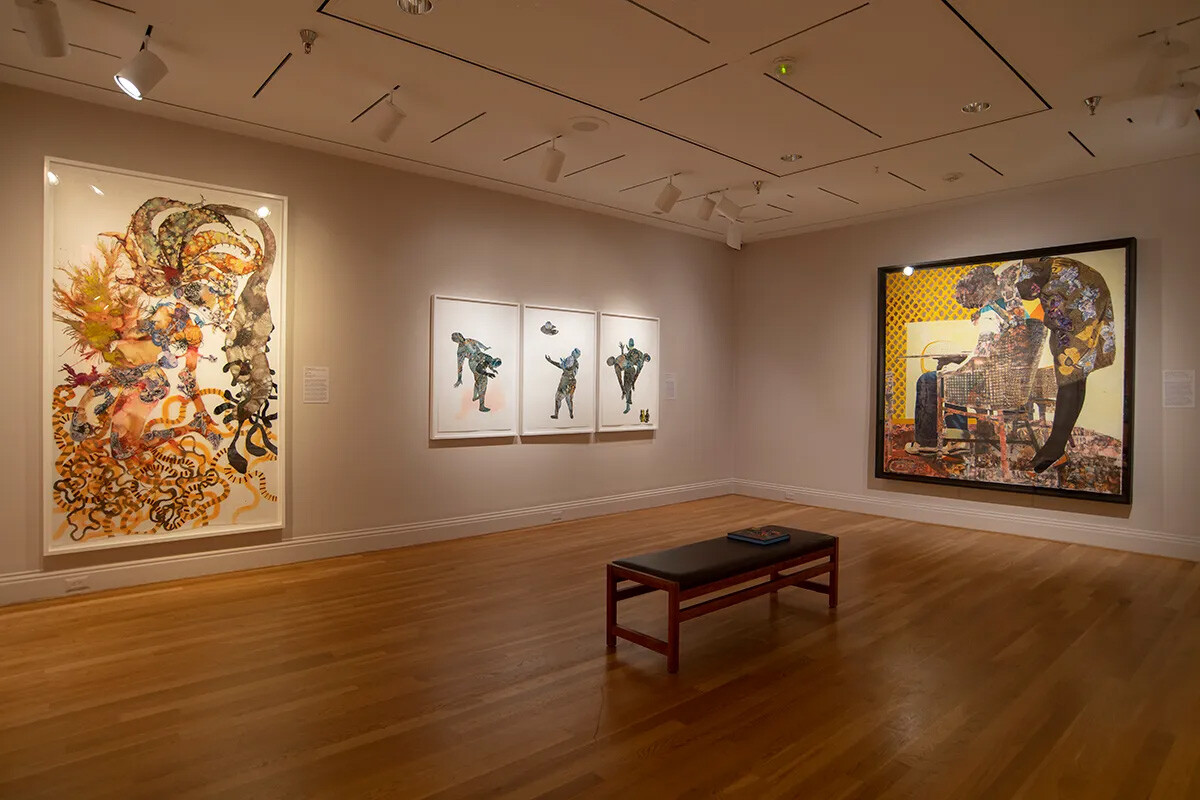
Installation view of “Multiplicity: Blackness in American Collage,” 2024, Phillips Collection, Washington, D.C.; Photo Lee Stalsworth
The death knell has been rung for print media many times over in the past decades: thousands of local newspapers have shuttered, digital readership has shot up, and journalism has suffered a crisis. But if print really is dead, you wouldn’t know it from “Multiplicity: Blackness in American Collage,” a smart survey that features dozens of pieces that invest precious publications with new life.
Take Helina Metaferia’s Headdress 61 (2023), featuring artist Chase Williamson donning a grand, collaged headdress. This headdress is partially formed from newspaper clippings sourced from archives in Nashville, the city were Williamson was employed at the time, working as a curatorial fellow at the Frist Art Museum. Certain headlines are visible—one advertises a report on integration efforts in Birmingham, Alabama—while others are tucked away beneath images of demonstrations held following the 1968 killing of Martin Luther King, Jr. The yellowed, puckered quality of the clippings causes Williamson’s crown to appear golden.
There’s also Narcissister’s Untitled Kingston NY Collage Series (Grey hair quilt), from 2021, in which a person’s face is hidden beneath triangular cutouts of portraits found in magazines and art catalogs. It’s tough to tell which articles these swatches were excised from, but it’s clear that Narcissister has lovingly pored over that source material to assemble the dizzying array of eyes, noses, and mouths seen here. The artist has posed this mix-and-match array of facial features with one big hand set atop it all, its carefully manicured figures seemingly caressing these rephotographed papers.
Both Metaferia and Narcissister’s works evince a winsome geekiness: these artists, like nearly all the others in the show, have obviously spent hours in bookshops, libraries, and archives, plucking tattered volumes off the shelves and poring over their pages. Yet they are both not content to leave their materials as they found them—they make their magazines and newspapers their own and envision new possibilities for all that printed matter along the way.
“Multiplicity,” which opened earlier this summer at the Phillips Collection in Washington, D.C., after first appearing at the Frist in Nashville, adds a significant chapter to the history of collage. The technique has historically been associated with white artists like Georges Braque and Hannah Höch, who likewise relied heavily upon newspapers, cutting and pasting their words and pictures to form shocking new associations. (And, in the case of Höch, to commit acts of casual racism: she had a habit of appropriating images of African masks, then matching them with photographs of white women’s nude bodies.) To do so, for artists like Braque and Höch, was a means of provocation.
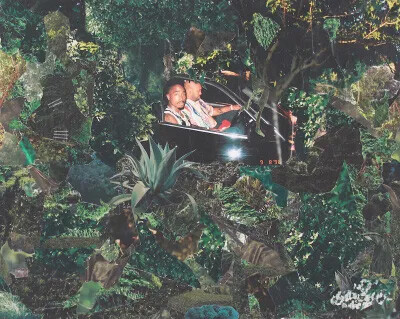
Lester Julian Merriweather, Moment, 2017.; Courtesy the artist
By contrast, the nearly 50 artists in “Multiplicity”—all of whom are Black—take a softer, more generative approach. When they slice and reunite their printed fragments, they do so with care. Even the most Höch-like work in this show, a spare Kandis Williams collage composed of a cluster of appropriated images of Black dancers, feels gentle. The subject of this work, Williams has said, is the “anti-Black sentiments” that have guided dance in Europe, specifically vis-à-vis the movements of one’s hips and groin. But the white background tames the chaos of Williams’s image, lending the work a mellow sedateness.
Artists like Williams have not ignored violence both past and present. They have instead highlighted how print media is imbricated in the history of anti-Black racism, then found ways of exposing that exploitation without reiterating it.
In his “#BetterGardensandJungles” series (2017–21), Lester Julian Merriweather offers dense agglomerations of cut-up images of trees and ferns, between which are visible tiny Black heads and body parts. The title puns Better Homes & Gardens, a magazine that has devoted itself to a certain middle-class whiteness, and suggests that the lavish houses in its pages willfully ignore the realities beyond them. In Hyperinvisibility (2022), Tay Butler remixes shots of Black basketball players on the court, fragmenting them in such a way that the athletes only appear as dismembered arms and legs. These photographs, all of them lifted from magazines, appear here alongside more stolen images of white photographers at work, symbolically implying that their cameras are tools of carnage.
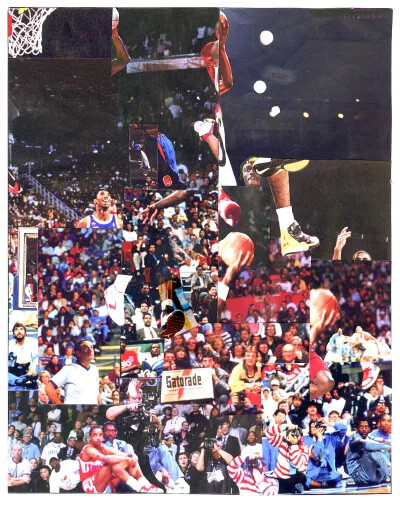
Tay Butler, Hyperinvisibility, 2022.; Courtesy the artist
Black-run media is a specific focus for several artists in this exhibition, who show that magazines like Jet and Ebony were essential in forming an archive of Black culture while also enabling misogyny and other forms of prejudice. Jet Auto Archive—April 27, May 11, May 25, 1992 (Medicated L.A. Kente), an astonishing 2018 work by Jamal Cyrus, intersperses strips from ads that ran in Jet with articles published in 1992, the year that widespread protests consumed Los Angeles following the acquittal of four officers who severely beat Rodney King. At nine feet long, this vast collage underlines the awkwardness of capitalist advertising pressing up against copy in a publication whose politics had shown growing pains.

Jamal Cyrus, Jet Auto Archive–April 27, May 11, May 25, 1992 (Medicated L.A. Kente), 2018.; Courtesy Inman Gallery and Megan & Casey McManemin
But rather than leaving all these spreads as found, Cyrus has cut them into strips, then woven those strips together and added little boxes that each contain texts of their own. Cyrus has said that those texts, which are not made available for consumption by the piece’s viewers, are intended as “medication” for the haunted Jet archive that he has mined. In that way, Cyrus has taken pre-existing print media and then found ways of inventing new possibilities for it, suggesting that the archive is hardly fixed at all.
Lorna Simpson takes a similar approach by appropriating pin-ups from Jet. These photographs are famous because they presented amateur Black women models in a way heretofore largely unseen in mainstream publications. “These were real women, not fantasies,” as Jennifer Wilson recently put it in a New Yorker discussing the legacy of the recurring “Beauty of Week” column. What if these women grew tired of being looked at? Simpson’s 4 Walls (2023) provides the answer with eight images of these seductive women, their bodies overlaid with maps of the cosmos. Minus some eyebrows, hair, and partially visible eyes, there’s not much to see here—just stars and galaxies, a whole other kind of beauty.
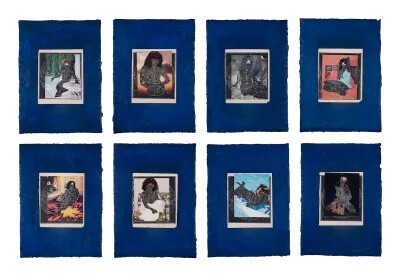
Lorna Simpson, 4 Walls, 2023.; Courtesy the artist and Hauser & Wirth
Jet’s final print issue published in 2014, and that means Simpson’s pages are at least a decade old. That means its archive is finite. Space, on the other hand, is hardly that—and it may even be growing. In Simpson’s hands, print may be dead, but it’s starting to find new life.


